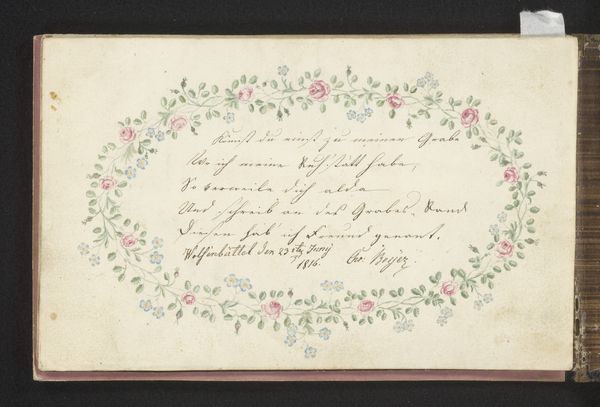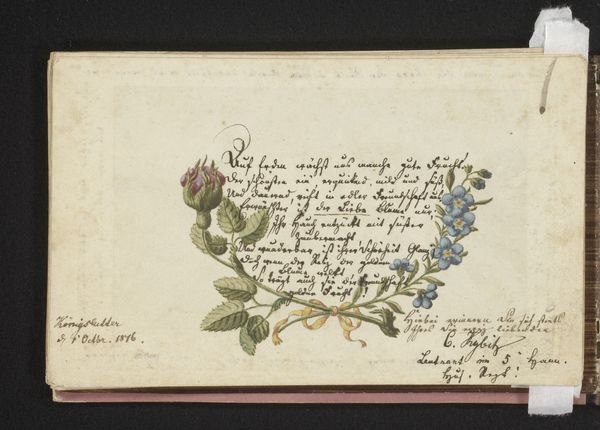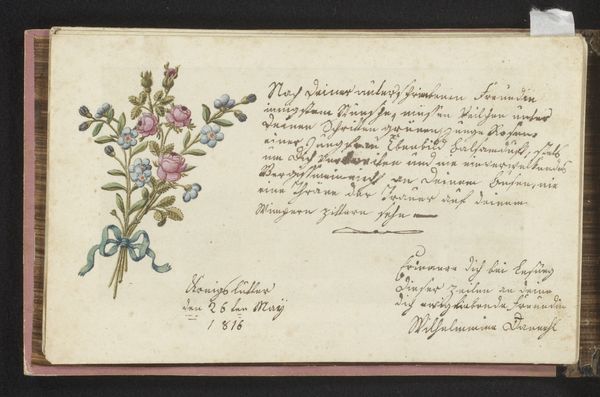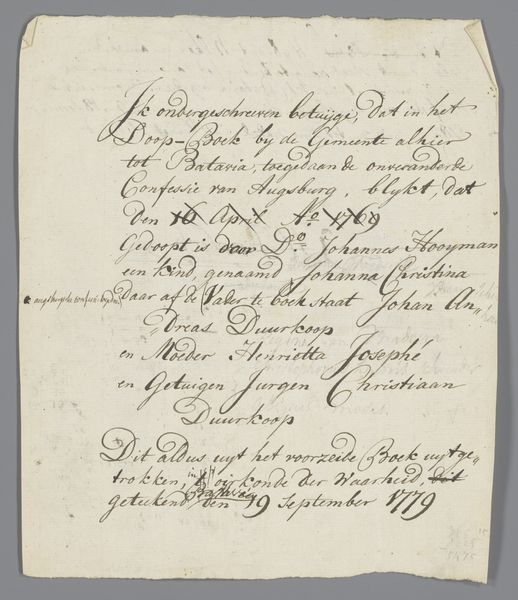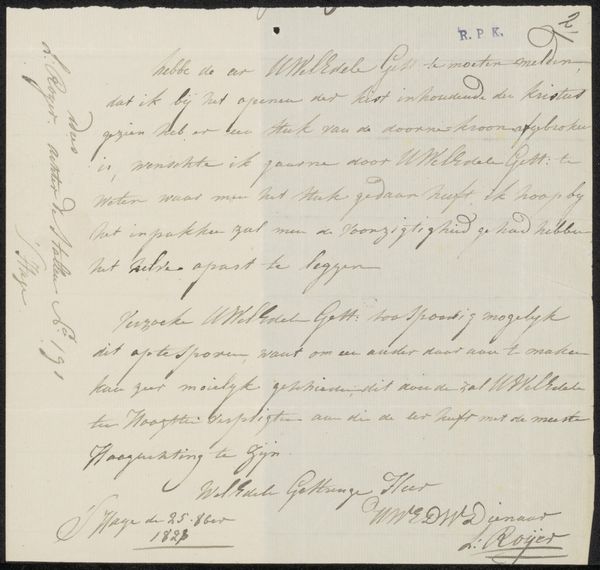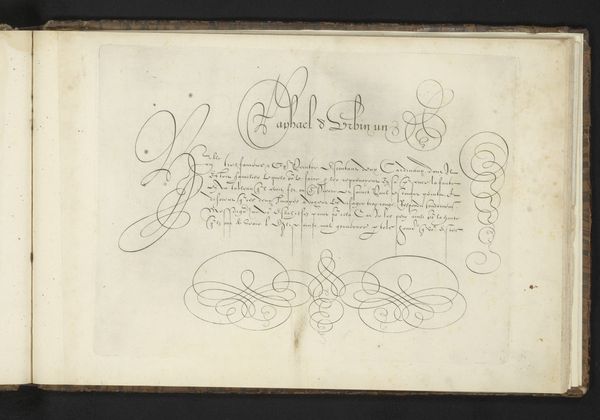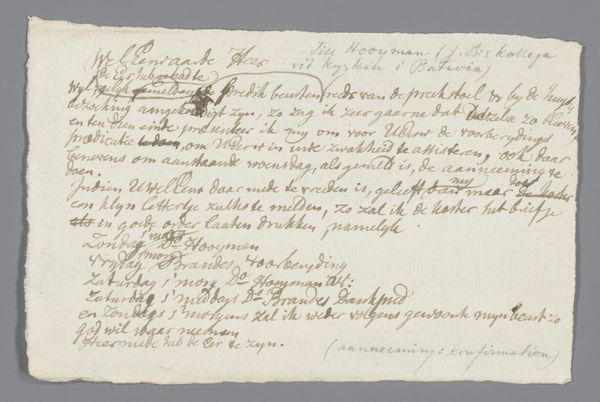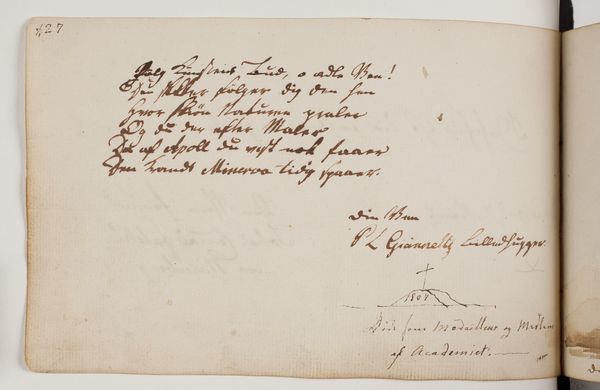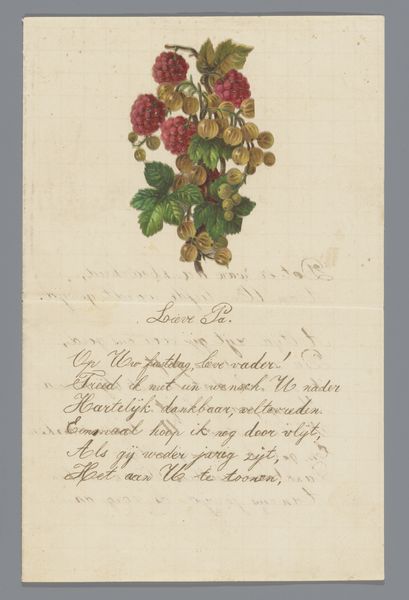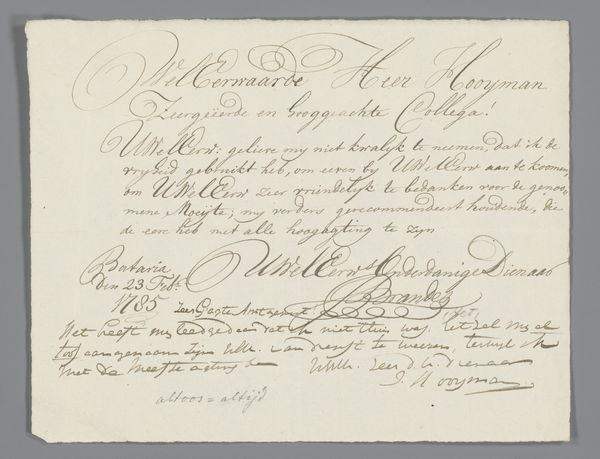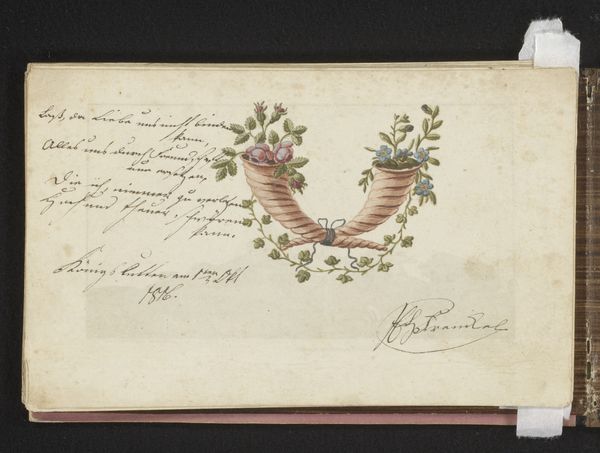
drawing, paper, watercolor
#
drawing
#
paper
#
watercolor
#
romanticism
#
watercolor
#
calligraphy
Dimensions: height 105 mm, width 171 mm
Copyright: Rijks Museum: Open Domain
Editor: We're looking at "Tekst en vergeet-me-nietjes," a watercolor and ink drawing on paper from around 1770 to 1826. The elegant script and delicate forget-me-nots give it such a wistful, sentimental feeling. What historical context should we consider when viewing it? Curator: This appears to be a page from an album amicorum, or a friendship book, a common practice in the 18th and 19th centuries. Consider the social function: friends and acquaintances would contribute poems, drawings, or dedications. The presence of the verse and forget-me-nots points to the conventions of Romanticism. Who was Minna Schintrel and why immortalize her name next to it? Editor: So, it was like an early version of social media? A way of building and performing a social identity? Curator: Precisely. The act of contributing to these books, and the content within them, reflect social standing, education, and personal relationships. Notice the calligraphy; that itself communicates an element of status and sophistication. The book literally preserves the relationships of an individual within a particular community at a specific moment in time. Did the rise of new institutions, galleries and museums, transform practices of keeping friendship albums like this? Editor: Good question. I would think albums and books like this would make artworks more democratic, accessible to people who may have been excluded from elite circles. Curator: Precisely. Also consider that literacy was becoming more widespread, alongside shifts in social structures related to increased industrialization and urbanization, which then impacted traditional notions of status and identity, what can art, as public history, do to preserve them for generations to come? Editor: So it's about seeing the piece not just as an aesthetic object, but as a document of social rituals. I'm understanding how important historical context is for making sense of it! Curator: Exactly. It gives new layers to those delicate forget-me-nots.
Comments
No comments
Be the first to comment and join the conversation on the ultimate creative platform.
